Wetlands
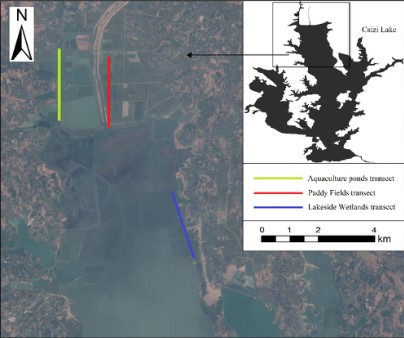
Wang X, Chen J, Zhou L. Effects of human activities on the diversity of waterbirds wintering in a shallow lake of the middle and lower Yangtze River floodplain, China[J]. Diversity, 2020, 12(8): 302.
Human activity is the major factor driving the wetland degradation in shallow lakes. Human exploitation of lake wetlands alters the habitats of wintering waterbirds, and, in turn, waterbird diversity in the shallow lakes. In the present study , we surveyed species composition, abundance, and habitat characteristics of waterbirds in three types of wetland habitats (natural lakeside wetlands, paddy fields, and aquaculture ponds) at Caizi Lake, a shallow lake in the middle and lower Yangtze River during the wintering period, and investigated the effects of habitat change driven by human activity on the diversity of wintering waterbirds. Principal component analysis of the three wetland habitat types revealed that factors influencing waterbird diversity include wetland area, vegetation cover, water level, and degree of human interference. Therefore, minimizing human interference and ensuring suitable habitats at specific periods could facilitate the maintenance of waterbird diversity.
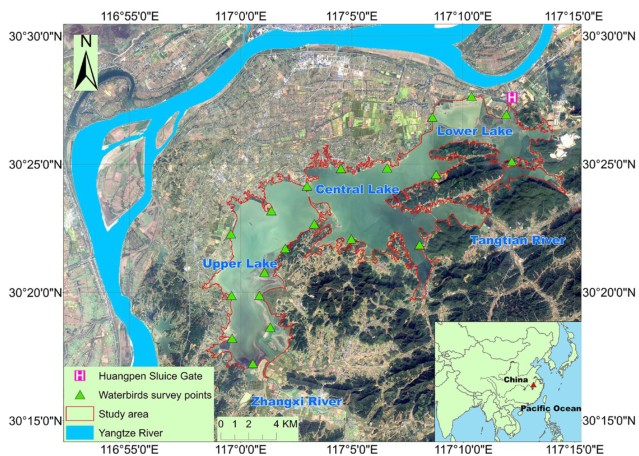
Li C, Yang Y, Wang Z, et al. The relationship between seasonal water level fluctuation and habitat availability for wintering waterbirds at Shengjin Lake, China[J]. Bird Conservation International, 2019, 29(1): 100-114.
Conservation plans for waterbirds in periodically flooded wetlands should be based on a deep understanding of the relationship between habitat availability and the hydrological regime. Using waterbird surveys and remotely sensed images, this research investigated how habitat availability for wintering waterbirds was regulated by seasonal water level fluctuation at Shengjin Lake in the lower Yangtze River floodplain, which is an important wintering area along the East Asian-Australasian Flyway. For effective wintering waterbird conservation in the ephemeral lacustrine wetlands in the Yangtze River floodplain, this research suggest stepwise water recession plans, together with the recovery of the aquatic vegetation community and reduction in high-density aquaculture, to synchronise the exposure of foraging habitats with the migration phenology of different waterbird species.
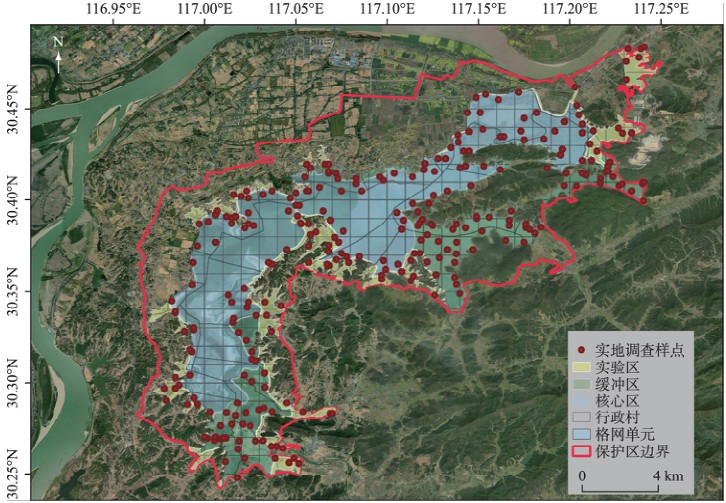
Wang W Q, Zhou L Z, Chen W, et al. Evaluation of conservation effectiveness of Lake Shengjin, lower reaches of the Yangtze River, 1989-2019[J]. J. Lake Sci, 2021, 3: 905-921.
Effectiveness of wetland conservation is a reflection of the quality, health and threatened situation of wetland ecosystem after the implementation of wetland conservation policies and measures, and also an important reflection of the degree of achievement of wetland protected goals. Ecological pressure is an important factor affecting the realization of the wetland protected goals. It can be evaluated from the perspective of wetland ecological pressure, state, and response. In this research, Lake Shengjin was taken as the research object,the index system of conservation effectiveness was established based on the Pressure-
State-Response (PSR) model ,results show that the conservation effectiveness has declined in the past 30 years. It is suggested that the grid monitoring and management unit should be implemented into the administrative unit, and the apanage management should be strengthened through establishing the management system of the river, lake, and forest chief, to control the ecological pressure and enhance the management and conservation effectiveness of wetland protected areas.
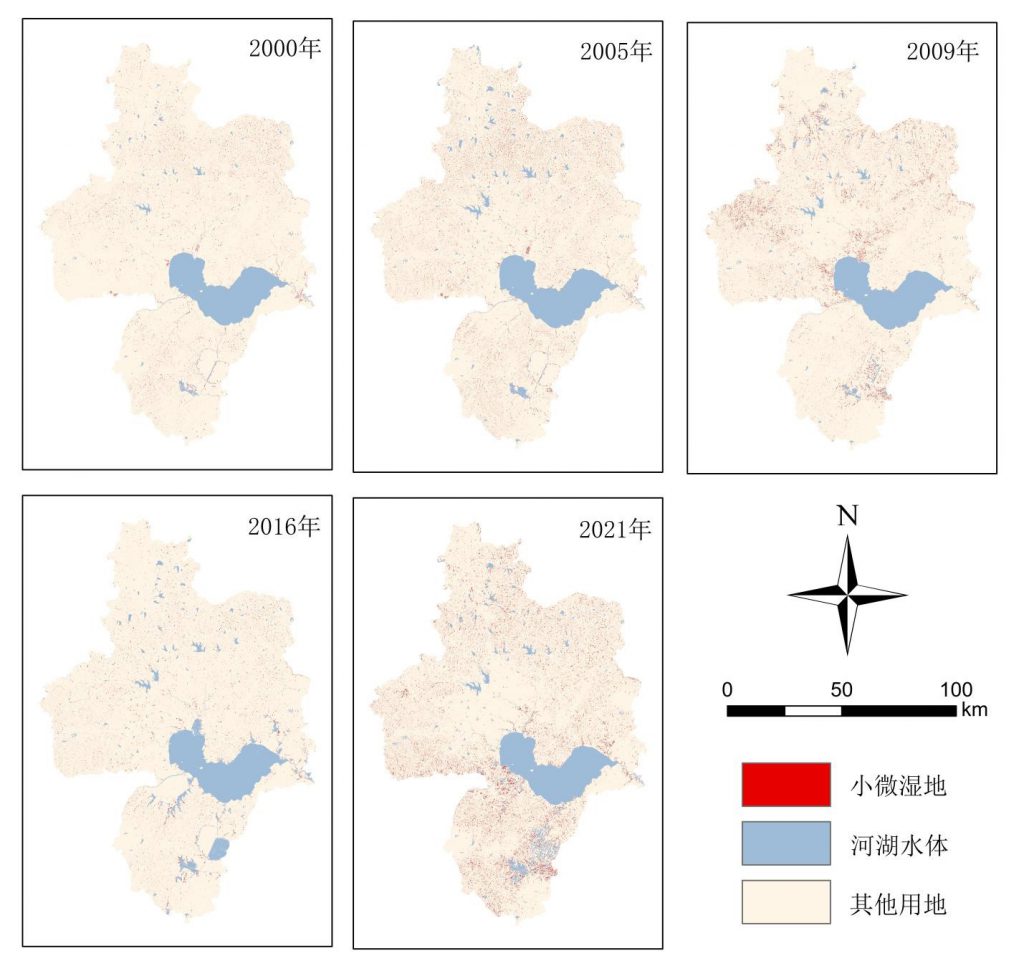

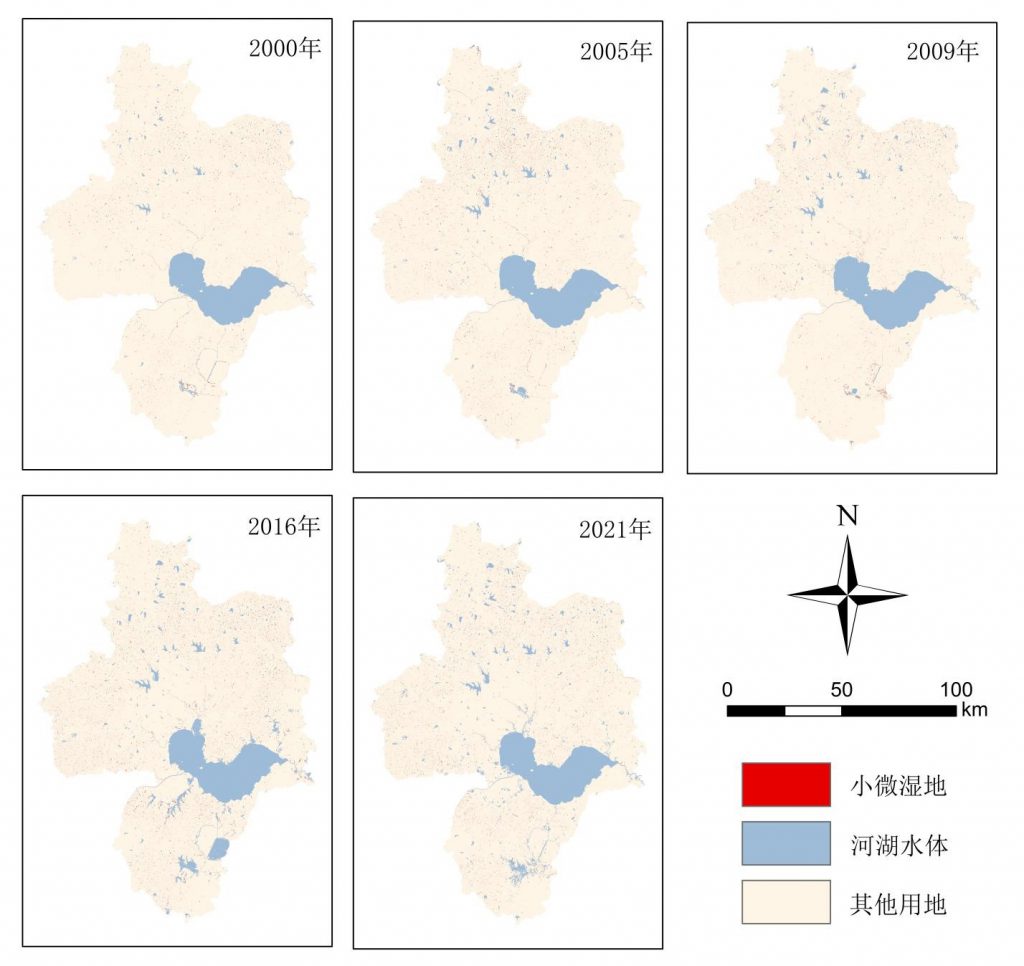
Micro-wetlands refer to nearshore and coastal wetlands, lake wetlands, swamp wetlands, and artificial wetlands with surface water accumulation throughout the year or during part of the season, with an area smaller than 8 hectares, formed in the course of long-term natural evolution. Despite their relatively small size, micro-wetlands possess high ecological service value, playing crucial roles in flood retention, water level regulation, water purification, climate regulation, and landscape recreation. This study focuses on micro-wetlands in Hefei City, utilizing Landsat series images for micro-wetland information extraction. Employing GIS technology, the spatial distribution characteristics of micro-wetlands are analyzed, and the driving factors behind the dynamic changes in micro-wetlands are explored. The aim is to supplement the current status of micro-wetland resources in Hefei City, providing a reference for the conservation and management of wetland resources in the city.
Wetlands Need Protection
Wetlands serve as habitats for numerous migratory birds and hold significant importance in bird conservation, water resources management, and climate regulation. As a vital component of ecosystems, strengthening the protection of wetlands helps maintain ecological balance, safeguard endangered species, and sustain a healthy hydrological cycle.
The video on the right shows the status of Shengjin Lake Wetland on January 24, 2024
